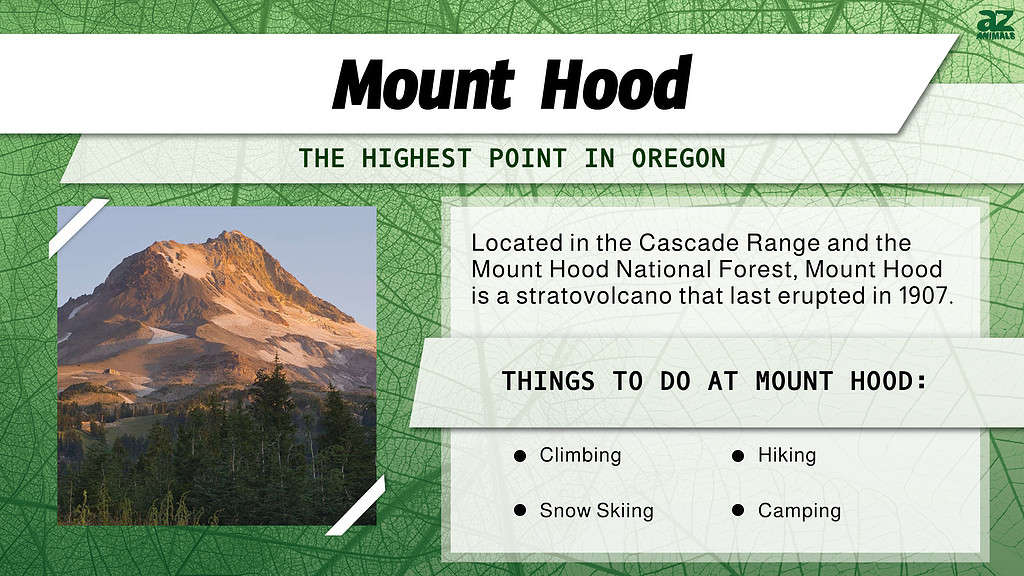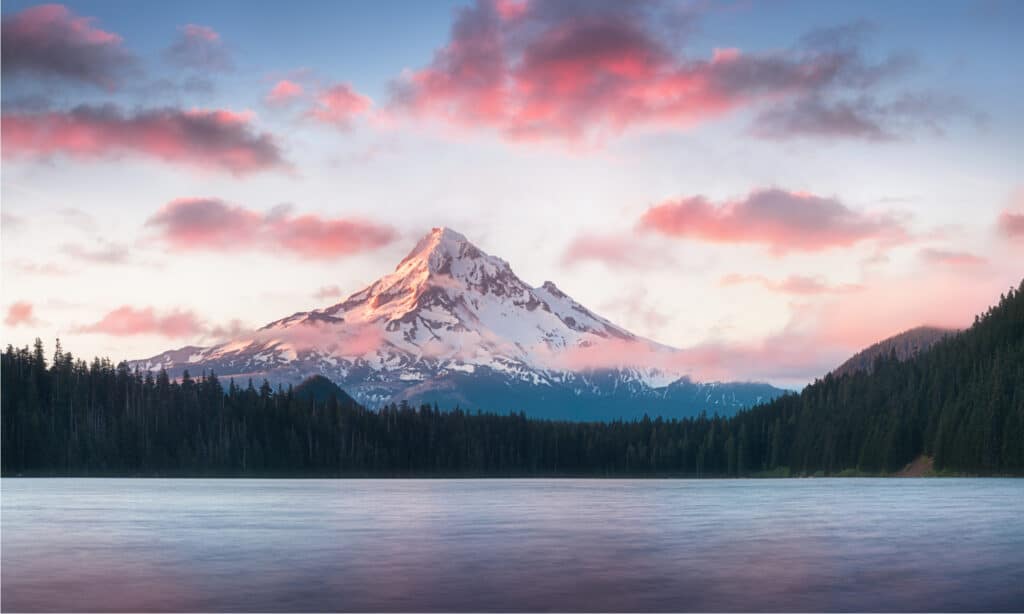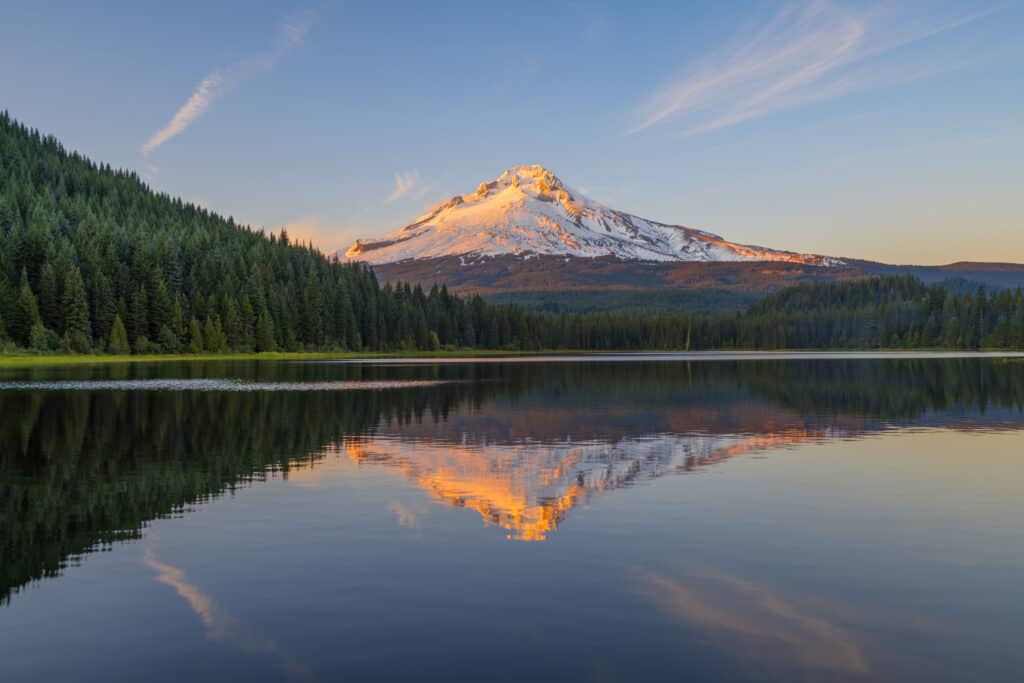Oregon is known for its many volcanoes, famous Tillamook cheese, and the relentlessly individual city of Portland. With a population of over four million people and nearly 100,000 square miles of land, Oregon is full of surprises. You can find ocean beaches, desert shrublands, mountains, evergreen forests, and even waterfalls in Oregon. The state’s mountains are some of the most picturesque in the country, and many of them are made, at least in part, from volcanic activity. But what about the highest point in Oregon? Is it volcanic?

Here, we’ll explore the highest point in the state and find out just what it takes to get there. We’ll also find out how tall the peak itself is and what there is to do in the surrounding area. Additionally, we’ll see how Oregon’s state high point compares to the topography of the rest of the state. Finally, we’ll discover the top five highest points in the state and find out just how close they are to one another.
The Tallest Peak in Oregon

Mount Hood is the highest point in Oregon.
©Michal Balada/Shutterstock.com
Standing at 11,239 feet above sea level, Mount Hood is the highest point in Oregon. Mount Hood is one of the most popular mountains in the world for climbers. But it’s so much more than just a mountain. In fact, Mount Hood is actually a stratovolcano. Don’t worry, though — it hasn’t erupted since 1907. Located in the Mount Hood National Forest, this unique, rugged-looking peak is easily visible for miles around.
Mount Hood is a part of the Cascade Range that runs through the Pacific Northwest. It’s also the 13th highest state high point. Located about 90 minutes east of Portland, the mountain is a popular destination for tourists. The south side of the slope also sports two ski resorts and the ever-impressive White River.
Oregon: Topographically
Oregon is a state topographically divided by the Cascade Mountains. The state’s northern border is largely defined by the Columbia River. The river traces a path of low elevation (below 1,200 feet above sea level) from west to east. Roughly the eastern two-thirds of the state (east of the Cascades) is made up of high desert and shrubland. West of the Cascade Mountains, the elevation drops off severely.
The lowest elevation in Oregon is located on the coast, where the land meets the Pacific Ocean. Mount Hood is the highest point in Oregon. Further, most of the state’s highest points also lie in the Cascade Range.
Can You Drive to the Top of Mount Hood?
No, you can’t drive to the top of Mount Hood. But that doesn’t mean that this state high point is restricted to elite mountaineers. If you’re thinking about a summit bid on Mount Hood, you’ll need to know how to use an ice ax and crampons. Even the shortest, most accessible route necessitates some climbing experience, but it’s far from impossible. And, sudden bad weather, injuries, or unforeseen circumstances can afflict even the most experienced hikers.
Many summit bids start from the South Side Route at the Timberline Lodge (located at around 5,800 feet elevation). From there, it’s only about three miles to the top, though there’s a lot of elevation gain in those three miles. For climbers looking to escape the hordes of tourists heading to the top by the most popular route, there are plenty of other routes. No matter which route you take, you’ll need a wilderness permit for the Mount Hood Wilderness Area. These are available at most trailheads, as well as at Timberline Lodge.
If the thought of hiking to the top alone scares you a little, don’t be afraid to seek out an experienced climbing buddy. You can even hire a guide to lead you safely up the mountain and back down. Mount Hood can be dangerous, so it’s best to be fully prepared for your summit bid.
Things To Do Near Mount Hood

Mount Hood National Forest is full of hiking and camping opportunities for all.
©iStock.com/Thomas Goebel
First and foremost, the highest point in Oregon has tons to offer visitors interested in nature. Mount Hood National Forest is chock full of hiking and camping opportunities for all. And, if you need something a little more metropolitan, don’t forget that you’re less than two hours away from Portland. The Columbia River runs to the north of the mountain, and the Columbia River Gorge National Scenic Area is always worth a visit.
Where Is Mount Hood Located On A Map?
Mt. Hood is located in the heart of Mt. Hood National Forest, just to the east of Portland, Oregon. The Hood River flows just north of the mountain, through Portland, and into the Pacific Ocean. It is also about a one-and-a-half-hour drive from Portland, Oregon.
The Five Highest Points in Oregon
Oregon is no stranger to high peaks. With the highest point in Oregon, Mount Hood, coming in at an astounding 11,239 feet above sea level, it’s no surprise that the top five highest points are also very tall.
The second highest peak in Oregon is Mount Jefferson, at 10,502 feet elevation. All five of Oregon’s top five highest points are in the Cascade Range. Coming in third is South Sister, at 10,363 feet above sea level. At 10,090 feet elevation, North Sister is the fourth tallest peak. Finally, with an elevation of 10,052 feet, Middle Sister is the fifth tallest peak in Oregon.
The photo featured at the top of this post is © iStock.com/Chris Anson
Sources
- , Available here: https://www.britannica.com/place/Mount-Hood
- , Available here: https://sos.oregon.gov/blue-book/Pages/facts/almanac/m-n.aspx
Thank you for reading! Have some feedback for us? Contact the AZ Animals editorial team.







